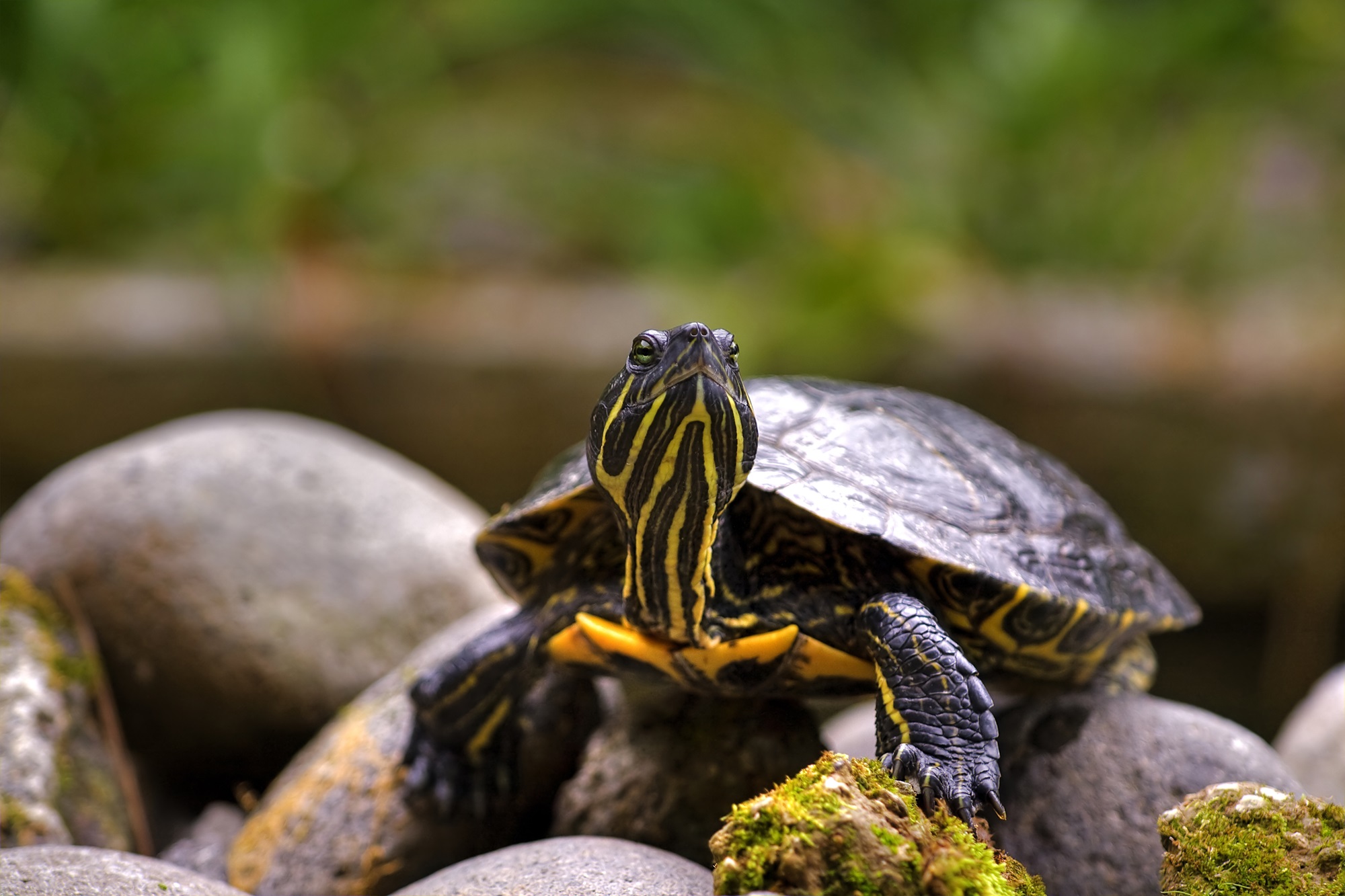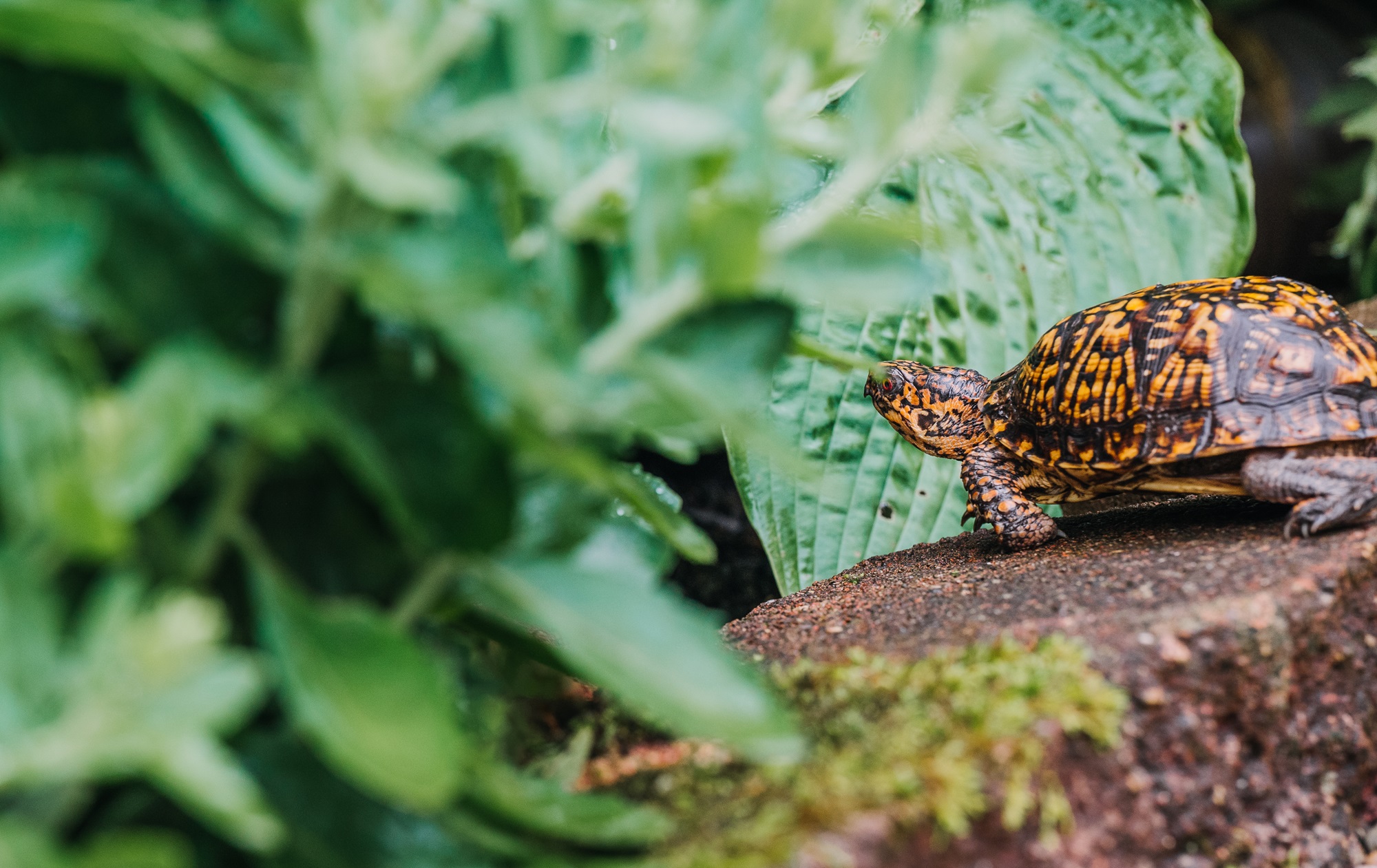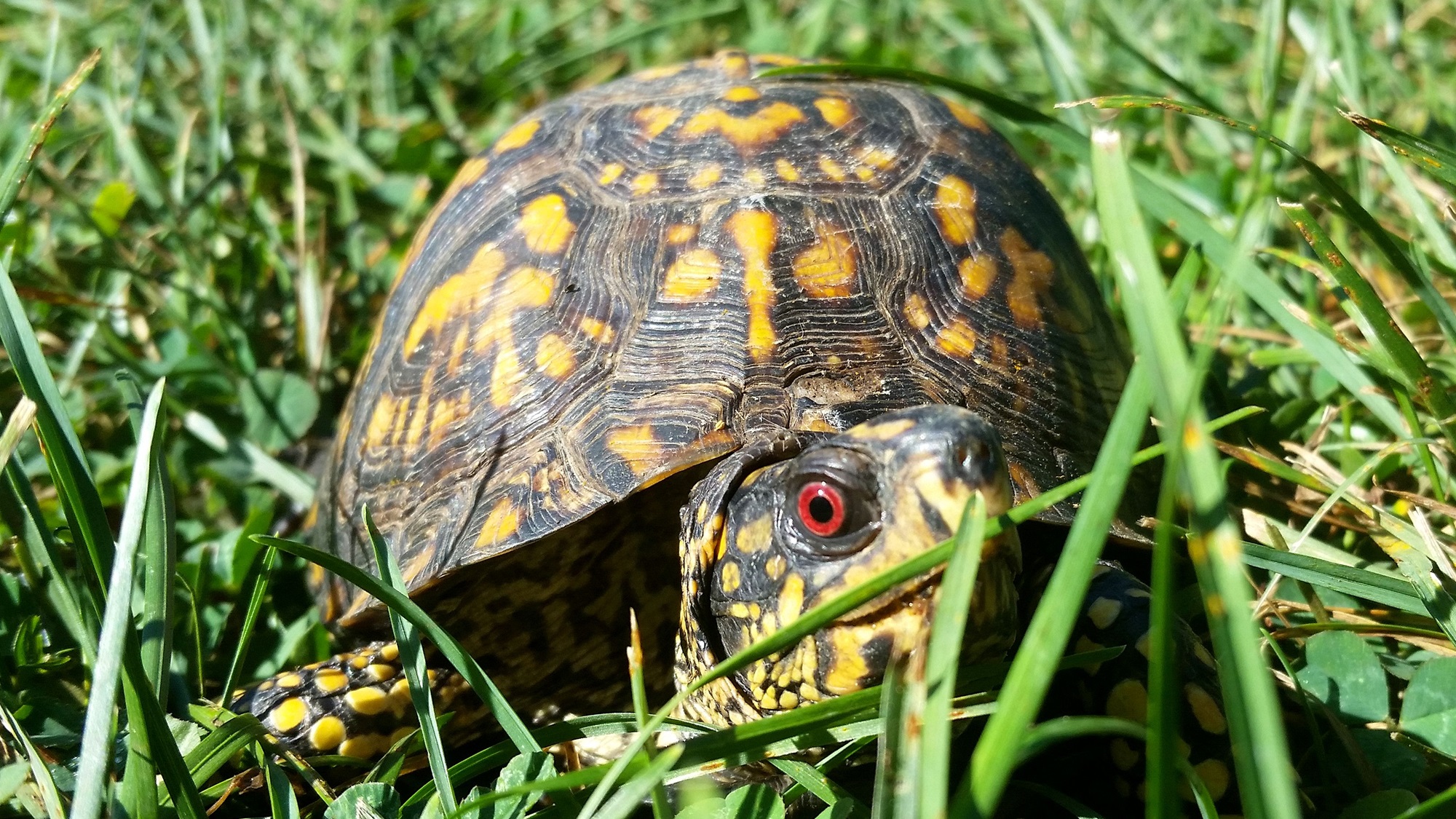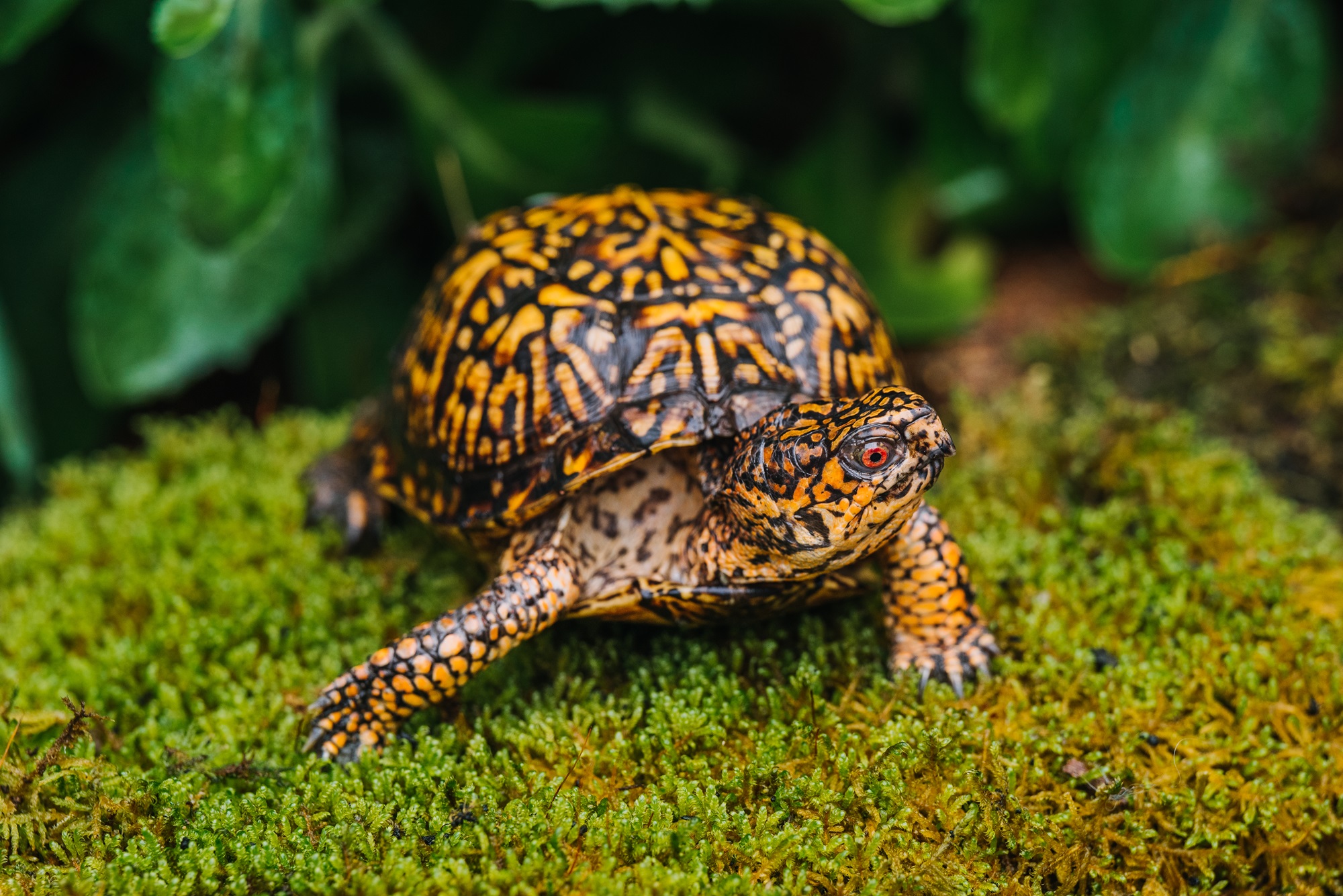Welcome to the Pet Breed Hub, where we dive into the enthralling universe of pet breeds with style! Today, we’re exploring the charming Eastern Box Turtle, a creature as intriguing as it is adorable. Buckle up for a unique adventure, tailored just for our young explorers!
Quick Turtle Facts
- Scientific Name: Terrapene Carolina
- Lifespan: Up to 50 years
- Habitat: Forests and grasslands
- Diet: Omnivorous
What Makes Eastern Box Turtles Special?

Eastern Box Turtles are like nature’s little tanks. Their shell, which they can completely close, is their superpower against predators. Unlike their pond-dwelling cousins, these turtles prefer to roam the land. They’re like the explorers of the turtle world!
A Glimpse into Their Natural Habitat
Eastern Box Turtles have a knack for picking the best spots in nature. They are often found in.
Forests: These turtles love the leafy, dense forests where they can hide under fallen leaves or logs.
Grasslands: Open fields and grassy areas offer them plenty of space to roam and find food.
Mixed Landscapes: They’re fans of areas that blend both forest and grassland elements.
Imagine a turtle leisurely strolling through a sun-dappled forest or a lush meadow. That’s their ideal hangout spot!

Why Their Habitat Matters
Temperature Regulation: They need a mix of sun and shade to regulate their body temperature.
Food Supply: Their habitat provides a varied diet, from berries to bugs.
Safety: The terrain offers protection from predators and a place to hibernate in the winter.
Creating a Similar Habitat at Home
If you’re planning to welcome an Eastern Box Turtle into your family, replicating their natural habitat is key. Here’s how:
Outdoor Enclosure: A secure outdoor space with plants, logs, and both sunny and shaded areas.
Indoor Space: If they’re indoors, a large tank with a mix of substrates, hiding spots, and a UVB light for basking.
Diet: What’s on the Menu?

Eastern Box Turtles are not picky eaters. Their diet in the wild includes.
Plants: They enjoy leafy greens, fruits like berries, and even mushrooms.
Animal Matter: They snack on insects, worms, and occasionally small amphibians and carrion.
Balance is Key: Their diet is a healthy mix of plant and animal sources, reflecting their omnivorous nature.
Imagine them foraging through the forest, munching on a juicy berry or a crunchy insect!
Feeding Your Pet Eastern Box Turtle
If you’re caring for one of these turtles, here’s how to mimic their natural diet:
Variety: Offer a balanced diet of vegetables, fruits, and protein sources like boiled eggs, cooked chicken, or mealworms.
Supplements: Calcium and vitamin supplements are essential for their shell and overall health.
Feeding Schedule: Young turtles may eat daily, while adults do well with a meal every other day.
Quick Tips for a Happy Turtle
Fresh Water: Always have fresh water available for drinking and soaking.
Avoid Processed Foods: Stick to fresh, natural options rather than processed pet foods.
Watch the Portion Sizes: Overfeeding can lead to health issues.
FAQs

1: How long do Eastern Box Turtles live?
They can live up to 50 years with proper care.
2: What do Eastern Box Turtles eat?
They are omnivores, eating a mix of vegetables, fruits, and protein sources like insects and lean meats.
3: Do they need a specific type of habitat?
Yes, they require a habitat that mimics their natural environment with proper temperature, humidity, and space for burrowing and hiding.
4: Can Eastern Box Turtles be handled frequently?
They are not fond of frequent handling. Gentle, infrequent interaction is best to avoid stress.
5: Are they good pets for children?
They can be, but it’s important to supervise interactions, as turtles require gentle handling and specific care.
6: Do they require veterinary care?
Regular veterinary check-ups are recommended to monitor their health and well-being.
7: Can Eastern Box Turtles live with other pets?
They are solitary by nature and might get stressed with other pets, especially if they share the same space.
8: How big do Eastern Box Turtles get?
They typically grow to about 4-6 inches in shell length.
9: Do Eastern Box Turtles hibernate?
In the wild, they hibernate. In captivity, whether they need to hibernate depends on the environment and veterinary advice.
10: Are they endangered?
Their populations are under threat in the wild due to habitat loss and other factors, so it’s important to source them responsibly and understand the legalities of keeping them as pets.
Conclusion
Eastern Box Turtles are a delightful addition to any family, bringing a touch of nature’s wonder into your home. They remind us to take life at a steady pace and appreciate the little things. Remember, these creatures are a long-term commitment, but the joy and learning they bring are immeasurable.
References And External Links
Learn more about how to care for your Eastern Box Turtle with our comprehensive care guide.
For a wide range of pet breed information.
The IUCN Red List provides information on the conservation status of various species, including the Eastern Box Turtle.

